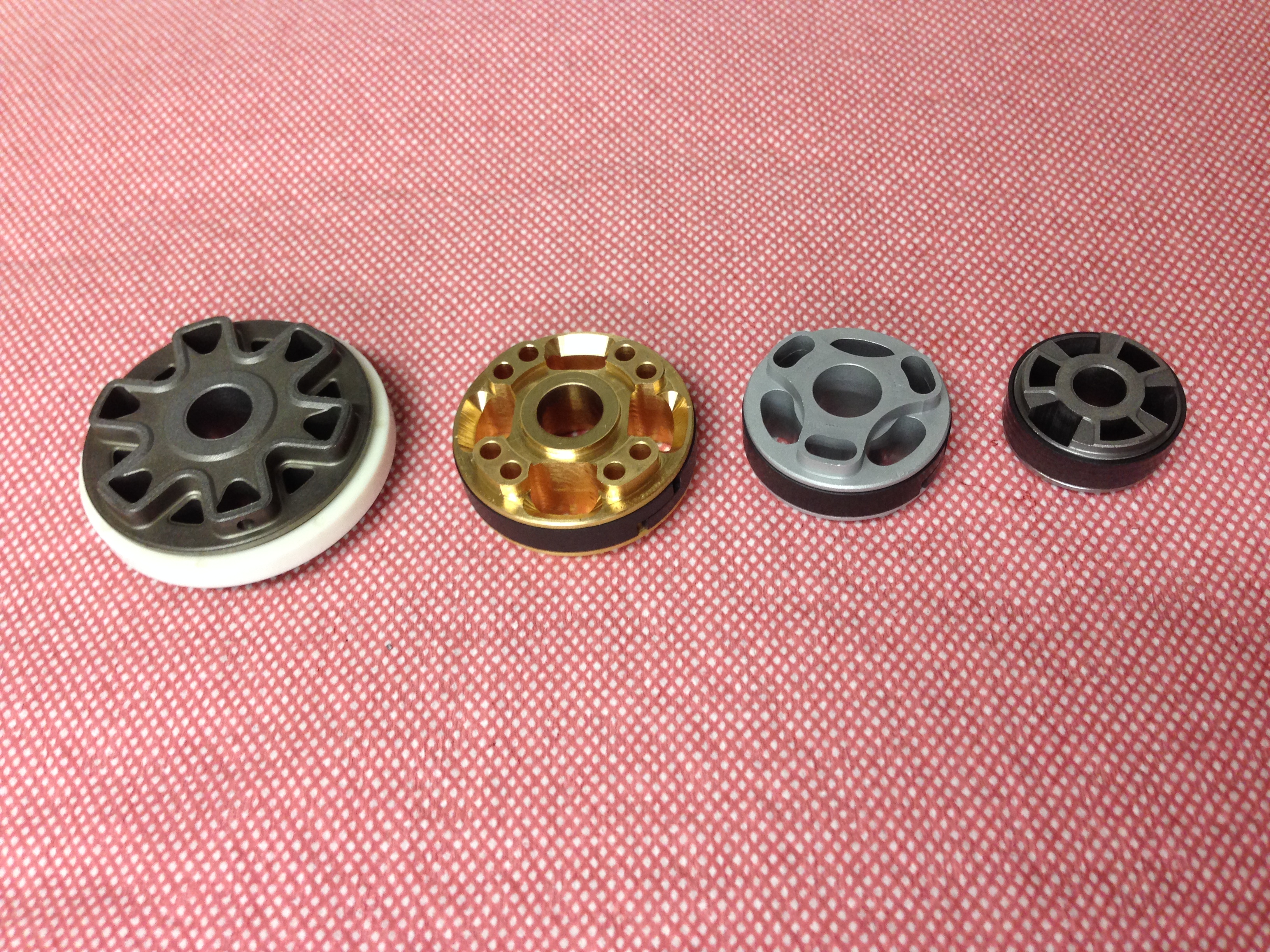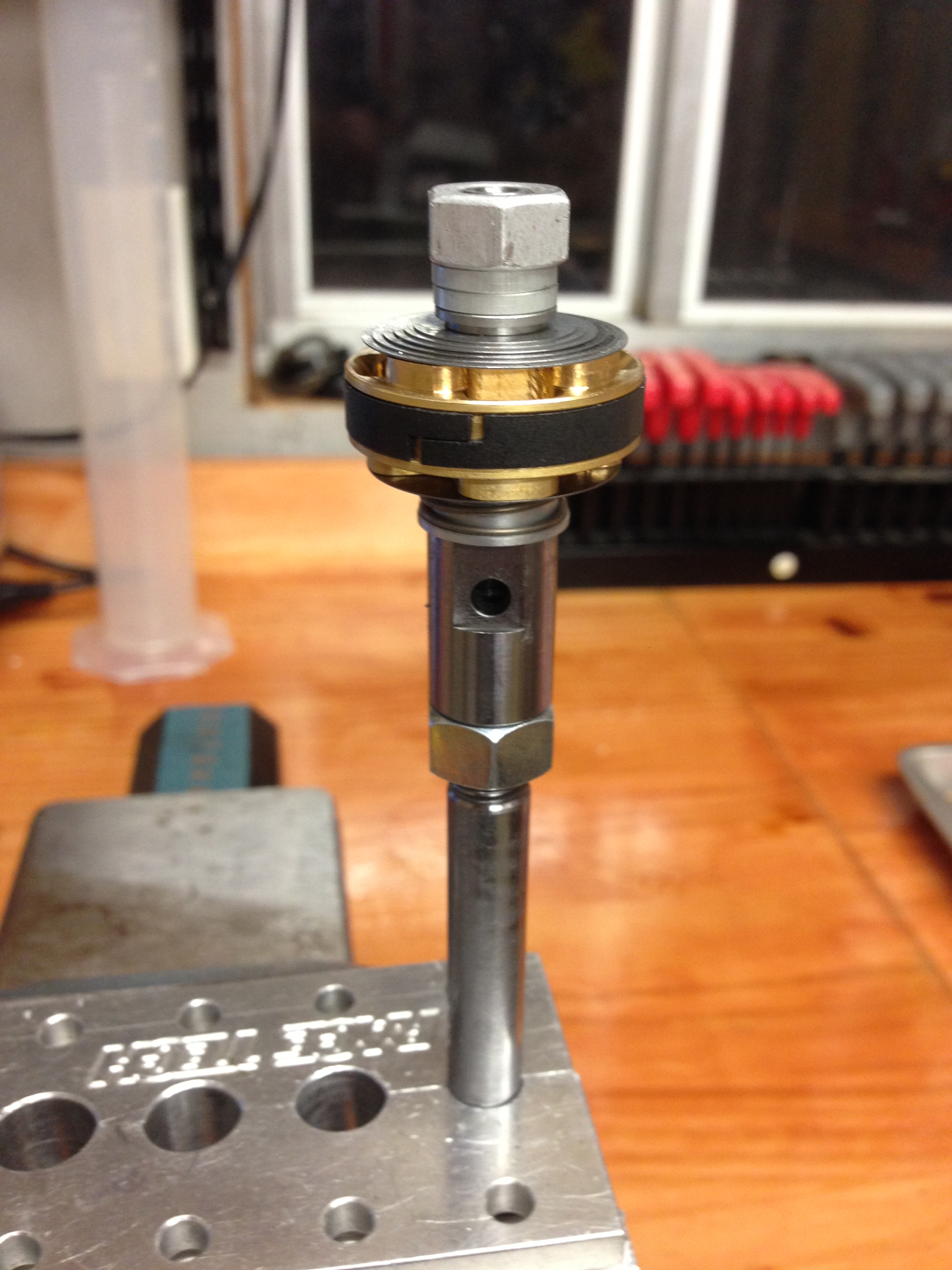Many times you’ll hear about someone putting in a 20 mm piston kit, or a 30 mm cartridge. Or you’ve read about the new Big Piston Fork and you’re not quite sure about the difference. So what are they talking about? What do these numbers correspond to?
When you hear somebody talk about a XX mm, they’re talking about the diameter of the rebound and/or compression piston in the fork. Below is a picture of 4 different sized pistons.
 From left to right: Showa Big Piston, Ohlins 30 mm, Ohlins 25 mm, Stock 20 mm
From left to right: Showa Big Piston, Ohlins 30 mm, Ohlins 25 mm, Stock 20 mm
Unless we’re talking about a Big Piston Fork, or a Damping Rod Fork (they don’t have any pistons), stock forks will come with 20 mm pistons. Some old Ohlins cartridges came in the 25 mm variety, but as of a couple of years ago they upgraded to the 30 mm piston. And finally the Big Piston Fork is the new kid on the block coming in with a 41 or 43 mm piston.
If you’ve never been inside of a fork, the piston is the foundation of “valving”. We use the piston in conjunction with shims to build our damping curve. So when we “revalve” forks we are changing the shims and/or their order to change our curve. Below you can see a 30 mm rebound circuit.
 So next time your buddy brags about upgrading his forks to a 25mm cartridge kit, you’ll know what he’s talking about!
So next time your buddy brags about upgrading his forks to a 25mm cartridge kit, you’ll know what he’s talking about!
